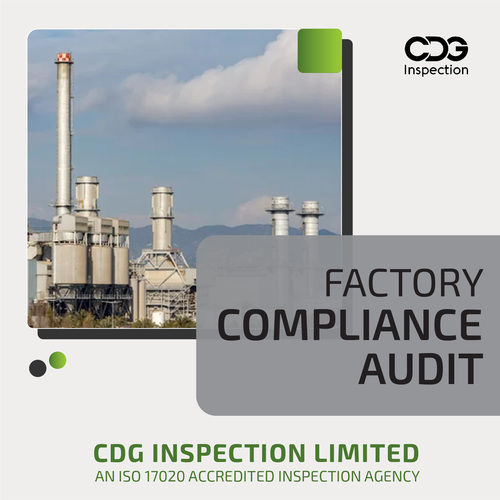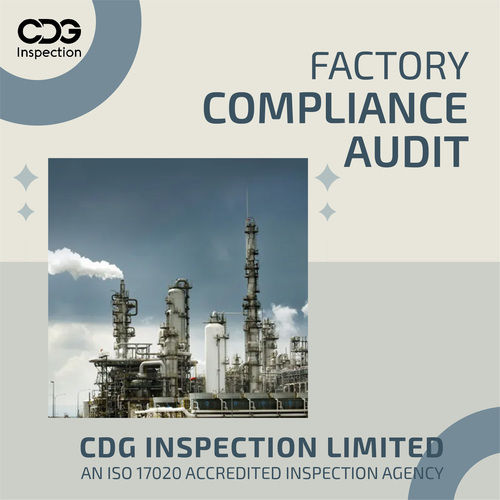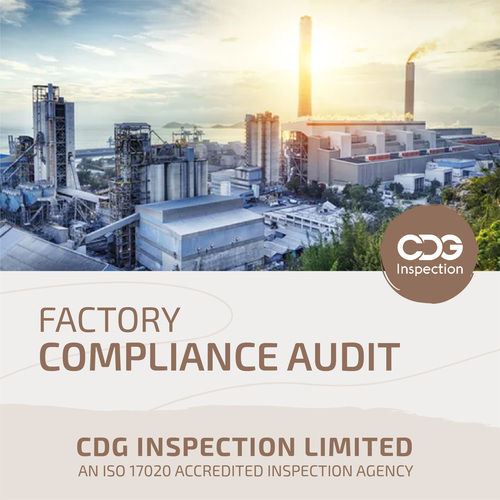Factory Compliance Audit In Noida
Product Details:
X
Product Description
CIL Provides Accredited Factory Compliance Audit Services in Noida, Uttar Pradesh, India. A compliance audit is a systematic review of an organizations adherence to predefined benchmarks set by a governing body. Compliance audits are performed by an auditing team to help the organization standardize processes, identify organizational gaps, and mitigate risks. The compliance audit report can then be used as a guide to solving problems of nonconformance from employees, teams, or other stakeholders. Types of Compliance Audits, Because a variety of regulatory compliance audits are applicable to organizations, it is critical that business leaders and compliance managers are knowledgeable about what they are and what they all entail. Below are three of the most common compliance audits that are usually observed in businesses, 1. HIPAA (Health Insurance Portability and Accountability Act), HIPAA compliance is a type of compliance that covers the sectors involved with healthcare services, health insurers, or any health care provider that transmits patient information. HIPAA audits help protect health information and ensure privacy security as a way to prevent healthcare fraud. 2.ISO (International Organization for Standardization), ISO compliance is when organizations adhere to the requirements of globally, accepted standards or industry best practices to meet ISO benchmarks. This can include ISO 9000,ISO 45001, or ISO 31000, among others. 3.GDPR (General Data Protection Regulation), GDPR compliance is businesses adherence to European Unions data privacy and security law. Its mainly composed of a four, step process planning, gap analysis, the remediation of gaps, and assessment of new processes that were put in place. GDPR compliance audit promotes better data security, which in turn, increases customer trust. Why Perform Factory Compliance Audits, Compliance audits are essential for businesses to ensure that they meet legal requirements or that they are working towards getting aligned with set parameters. Regular compliance audits help organizations achieve the following, a)Ensure a safe working environment, comply with government requirements and safety protocols intended to promote a secure and stress, free work space. b)Increase productivity, manage production downtime and boost profitability. Prevent penalties stay compliant with legal standards to avoid any legal issues and consequences. c)Establish a good reputation, gain public trust and dominate the industry you belong to by staying aligned with industry protocols d)Continuous operation, non compliance with regulations can lead to disruption or even operation cessation. Factory Compliance Audit Checklist, A compliance audit checklist is a tool used by external and internal auditors to determine the organizations compliance with government regulations, industry standards, or internal policies. It typically includes sections that would best cater to the compliance procedures being observed such as workplace safety, environmental adherence, and manufacturing best practices, among others. Compliance audit checklists help discover gaps in processes that can be improved in order to meet requirements, Factory Compliance Audit Steps, Below is a step by step guide on how to execute a compliance audit a. Decide on who will conduct the audit, Appoint someone in your organization to perform the audit, it may be a compliance manager, compliance officer, or someone from a third, party vendor. Establishing this from the start helps ensure a smooth compliance audit process. b. Identify your goals before starting the audit, Specify what you want to address. If there are previous compliance audits of the same process, note if there are significant results to be mentioned and use this as a guide when creating the audit plans. c. Collaborate with relevant stakeholders Meet with relevant leaders and other stakeholders prior to performing the audit. Regulate the audit by stating its scope, limitations, and guidelines. This step is to ensure that the auditing process is standardized, progressive, and efficient. d. Analyse existing processes Evaluate the current practices of employees and examine the companys internal controls concerning adherence to various industry standards or best practices. Locate if there are gaps to be addressed or procedures that are not in conformance with regulatory requirements. e. Rank and prioritize risks Assess the levels of recognized risks and determine your companys appetite for each. From there, prioritize those that would significantly impact your organization if not addressed properly, then gradually work on the remaining ones until each one is managed. f. Implement process changes Push through with the implementation of the identified needs for change. Continuously monitor them to ensure that they are being observed across the organization, in certain business units, or by a specific set of employees. Factory Compliance audit reports, Compliance audit reports generally include the assessment of policies, practices, and risks within the organization. It involves capturing significant data and photo evidence to identify gaps between the current and the desired compliance rate. Paperwork and data re, entries can be burden some and costly to maintain in the long term.
Tell us about your requirement

Price:
Quantity
Select Unit
- 50
- 100
- 200
- 250
- 500
- 1000+
Additional detail
Mobile number
Email








